Papers by Muhammad Algi Fachri Fachri

78th EAGE Conference and Exhibition 2016, 2016
ABSTRACT Fault damage zones in porous sandstones with porosity higher than 12% -15% commonly disp... more ABSTRACT Fault damage zones in porous sandstones with porosity higher than 12% -15% commonly display complex networks of mm to cm thick tabular deformation bands surrounding a fault core at the footwall, hanging wall, and fault tips. Deformation bands may cause order-of-magnitude permeability reductions which impair subsurface fluid flow (Antonellini and Aydin, 1994; Sternlof et al., 2004; Fossen and Bale, 2007; Rotevatn et al., 2009). These damage zone architectures surrounding the fault core are normally not included in conventional reservoir modeling workflows. The present study gives an example of how to include fault damage zone properties in reservoir models and the sensitivity of reservoir performance to some modeling parameters. A multi-scale modeling workflow is applied to incorporate damage zone heterogeneity of different scales into a synthetic reservoir model (Figure 1). The distribution of heterogeneity at meter scale, caused by the variation of deformation band density (number of deformation bands crossed along scanlines per meter) in damage zones, is captured using a combination of fault facies (Tveranger et al., 2005; Braathen et al., 2009) and truncated Gaussian simulation (Fachri et al., 2013a, 2013b). Three fault facies were defined in the damage zone based on deformation band density (high, medium and low density); undeformed rock constituting a fourth facies. An empirical model for spatial distribution of these facies was based on spatial analysis of band densities recorded in 106 scanlines across damage zones of extensional faults in porous sandstone outcrops in Egypt, Utah, UK, France, Netherland and Svalbard (Schueller et al., 2013). Effective permeability of individual fault facies were calculated using fine-scale mini-models for each facies, in which deformation bands and undeformed rock between deformation bands were rendered explicitly. Deformation band networks are generated using an algorithm originally developed for stochastic modeling of subseismic/secondary faults. Input data regarding deformation band orientation, displacement, and length-displacement scaling relationship are based on published outcrop studies. As good 3D outcrops of faults are rare, it is difficult to obtain good empirical field-datasets which allow quantification of variogram ranges for modeling purposes, especially in fault-parallel direction. Fluid flow simulations were carried out to investigate the effect of changing variogram ranges on model performance. Preliminary results show that model performance with respect oil recovery, water cut, oil production rate, field pressure and flow behavior is not influenced by changes in fault-parallel variogram ranges. Changing variogram range in fault-perpendicular direction causes only slight changes in reservoir response. The effect of upscaling the fault damage zone was also investigated. Results show that the upscaling of damage zone properties does not affect flow performance. The upscaled models do, however, display a difference in the remaining oil distribution at the end of production. The causes that give rise to these differing flow simulation results are discussed.
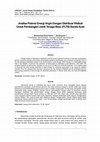
CIRCUIT: Jurnal Ilmiah Pendidikan Teknik Elektro, 2017
Energy needs in Indonesia in particular and the world in general continue to rise due to populati... more Energy needs in Indonesia in particular and the world in general continue to rise due to population growth, economic growth and energy consumption patterns themselves are constantly increasing. One of the fast growing renewable energy in the world today is wind energy. Wind energy is a renewable energy that is very flexible. In general, the utilization of wind power in Indonesia is less attention. Until 2004, the installed capacity of wind power utilization is only up to 0.5 MW from 9:29 GW potential. One method used to measure the wind energy potential of wind energy for electricity generation is by using the Weibull method. From the analysis that has been carried out by the method of Weibull can be concluded that the wind energy potential of wind energy for electricity generation in Banda Aceh does not meet the eligibility criteria.

Interpretation, 2017
Access to 3D descriptions of fault zone architectures and recent development of modeling techniqu... more Access to 3D descriptions of fault zone architectures and recent development of modeling techniques allowing explicit rendering of these features in reservoir models, provide a new tool for detailed implementation of fault zone properties. Our aim is to assess how explicit rendering of fault zone architecture and properties affects performance of fluid flow simulation models. The test models use a fault with a maximum 100 m displacement and a fault damage zone with petrophysical heterogeneity caused by the presence of deformation bands. The distribution pattern of deformation bands in fault damage zones is well-documented, which allows generation of realistic models. A multiscale modeling workflow is applied to incorporate these features into reservoir models. Model input parameters were modulated to provide a range of property distributions, and the interplay between the modeling parameters and reservoir performance was analyzed. The influence of deformation-band damage zone on res...
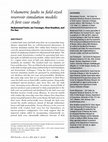
AAPG Bulletin, 2016
Conduit fault zones and fault zones that can accommodate longdistance along-fault flow are well-d... more Conduit fault zones and fault zones that can accommodate longdistance along-fault flow are well-documented phenomena. In reservoir simulation models, flow within these features is more correctly captured using volumetric representations of fault zones instead of employing standard two-dimensional fault planes. The present study demonstrates a method for generating fault envelope grids on full-field reservoir models, within which fault cores (i.e., regions where most of fault zone displacement is accommodated) are modeled. The modeled fault core elements are lenses and slip zones. They are defined as facies units and populated in the fault envelope grids using combined object-based simulation and deterministic techniques. Using the facies property, four reservoir simulation models are generated by modulating fault core thickness and slip zone type and permeability. Membrane slip zones (slip zones that act as partial barriers to fluid flow) cause the fault cores to form baffle-conduit systems. Along-strike positioned injector-producer pairs focus flow into the fault cores, decreasing sweep efficiency. In contrast, injected fluids of injector-producer pairs positioned to drain perpendicular to the fault cores are partitioned and distributed by the fault cores and therefore increase overall sweep efficiency. In reservoir models with conduit slip zones (slip zones that enhance flow along them and act as partial barriers to flow across them), the fault cores act as thief zones. Fluids preferentially move through the fault cores toward the nearby producers instead of through sedimentary layers with high permeability. Sweep efficiency in the reservoir models with conduit fault cores has less dependency on injector-producer configuration. Our study suggests that the improved realism added by incorporating volumetrically expressed fault cores substantially influences forecasts of field
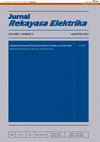
Jurnal Rekayasa Elektrika, 2015
Pemantauan terhadap parameter keluaran panel surya sangat perlu dilakukan untuk menilai kinerja s... more Pemantauan terhadap parameter keluaran panel surya sangat perlu dilakukan untuk menilai kinerja sebuah panel surya pada kondisi lingkungan yang nyata. Paper ini bertujuan memberikan suatu teknik baru pemantauan secara langsung dan real time terhadap parameter keluaran dari sebuah panel surya yaitu tegangan dan arus pada kondisi lingkungan tertentu. Untuk memenuhi keperluan pemantauan tersebut, sistem pemantauan kinerja panel surya yang dirancang dilengkapi dengan sensor pengukur arus dan tegangan yang telah dikalibrasi, sistem akuisisi data yang diintegrasikan ke spreadsheet Excel menggunakan program aplikasi PLX-DAQ dan kartu memori sebagai penyimpan data cadangan. Perancangan sistem berbasis mikrokontroler Arduino Atmega 328P dan dihubungkan ke komputer melalui port serial RS232. Kelebihan dari sistem pemantauan ini adalah hasil pengukuran dari setiap sensor dapat diproses secara langsung dan ditampilkan dalam bentuk grafik pada kondisi real time. Informasi mengenai tegangan dan arus dari panel surya yang dikumpulkan pada kondisi real time dapat diperoleh langsung melalui spreadsheet Excel tanpa memerlukan program ulang terhadap Arduino. Fasilitas ini memberikan kemudahan untuk pengolahan data selanjutnya.

The conditioning factors for fault facies modeling are a fault product distribution factor (FPDF,... more The conditioning factors for fault facies modeling are a fault product distribution factor (FPDF, a parameter describing where fault products occur in the fault envelope) and a shear strain distribution. Both conditioning factors are constrained based on the following input variables: - fault displacement model - the ratio of fault core thickness to fault throw - the ratio of footwall and hanging wall damage zones width to fault throw - the displacement percentage of fault core, footwall and hanging wall damage zones The shear strain distribution is normalized to a value between 0 and 1. The maximum shear strain value associated with the value of 1 can be varied in order to modify the relative volumetric proportion of the fault facies. The spatial heterogeneity of the fault facies can be varied by directly varying their probability distribution. The 3D trend of each fault facies is generated by combining the FPDF, fault envelope elements (fault core and damage zones), and strain dis...

We have studied flow simulation behaviour of reservoir models that utilise fault facies (Tverange... more We have studied flow simulation behaviour of reservoir models that utilise fault facies (Tveranger et al., 2005) to explicitly describe fault zone structure. The purpose of this effort has been to monitor model response to variations in model input parameters. The study is based on a model set-up previously presented by Fachri et al., 2008 as part of The Fault Facies Project. Tested input variables include: (i) fault core thickness, (ii) damage zone width, (iii) distribution of fault throw between fault core and damage zone, (iv) type of displacement function (linear, logarithmic, etc). A total of 64 model configurations were set up, with 10 realizations generated for each model. The models demonstrate how fault zone displacement models can be flexibly designed and applied in fault facies modeling. Qualitative and quantitative analysis of the fault zone models show that: 1. Particular meso-scale features of fault zones, such as fault rocks, lenses and damage zone zonation, can be re...

Flow behavior of subsurface reservoirs is commonly strongly influenced by the presence of faults ... more Flow behavior of subsurface reservoirs is commonly strongly influenced by the presence of faults constituting baffles, barriers, conduits or combinations of the three. Accurate and flexible ways of describing these structural heterogeneities and their petrophysical properties are thus essential when generating reservoir models for industrial purposes. However, current methods employed for modeling fault properties are hampered by a number of largely software-driven conventions which preclude the implementation of the full range of structural information available, and furthermore fail to facilitate prediction of key aspects of observed reservoir behavior, such as flow inside and parallel to the fault. In nature faults affect reservoir geometry, by displacing stratigraphy, and reservoir properties, by changing the structure of the host rock surrounding the fault. Current modeling practice largely ignores the volumetric expression of the latter by representing faults as 2D planes with...
We present an attempt to incorporate structural elements of deformation-band faults into reservoi... more We present an attempt to incorporate structural elements of deformation-band faults into reservoir models by employing volumetrically expressed building blocks (i.e. “fault facies”) and standard modelling tools developed for industrial purposes. We use generic input data derived from outcrops and subsurface to establish a set of model constraints and probability functions which are subsequently used in sequential indicator simulation (SIS) and object based modelling of the spatial distribution of fault facies. The resulting modelled fault zone architectures is benchmarked against deformation-band fault zones as seen in outcrops.

London 2013, 75th eage conference en exhibition incorporating SPE Europec, 2013
ABSTRACT Conduit faults and faults that can accommodate vast long-distance along-strike flow are ... more ABSTRACT Conduit faults and faults that can accommodate vast long-distance along-strike flow are well-documented phenomena. In reservoir simulation models, flow within these features are more correctly captured using a volumetric representation of fault zones rather than employing 2D fault planes. We here demonstrate a method for implementing fault zone grids and features on a full-field case study. The fault zone grid is populated by fault rocks and fractures. We investigate the resulting effect on the modelled forecast of field-wide reservoir flow. Membrane slip zones cause the fault zones to form barrier-conduit systems. Along-strike positioned injector-producer pairs focus flow into the fault zone, decreasing sweep efficiency. On the other hand, injector-producer pairs positioned to drain perpendicular to faults partition the injection fluids and therefore tend to increase overall sweep efficiency. In models with conduit slip zones, the fault zones act as thief zones. Fluids preferentially move through the fault zones towards the producers. Consequently, sweep efficiency is more related to injector-producer distance than the geometric relation of well pairs to the faults. Our study suggests that the improved realism added by incorporating volumetrically expressed fault zones substantially influences forecasts of field behavior, and consequently should be considered during oil/gas production planning.

3rd EAGE International Conference on Fault and Top Seals, 2012
Relay ramps may considerably control fluid flow across otherwise sealing fault zones and, therefo... more Relay ramps may considerably control fluid flow across otherwise sealing fault zones and, therefore, they are subjected to fluid flow simulation studies in relation with groundwater extraction and petroleum production. However, these studies used mainly deterministic modelling approach based on field observations. In this paper, we extend this approach by incorporating a conditional simulation technique, i.e. truncated Gaussian simulation (TGS), to provide stochastic elements in the modeling work and to improve the representation of detailed relay ramp structure. TGS attributes (facies proportions and variogram ranges of the Gaussian field) are defined based on field observations of the Delicate Arches Ramp, Utah, which is characterized by the presence of three structural sets. Groups of facies defined based on the structural sets are modelled independently using TGS, and the final model is generated by merging the TGS realizations. The relay ramp facies model is used to generate upscaled models. The upscaling procedure use petrophysical values and coarse grid used in a recent flow simulation study of the Delicate Arches Ramp deterministic model. Flow simulation results show that the role of relay ramp as conduits for fluid flow is more pronounced in models built using TGS than that in deterministic models.
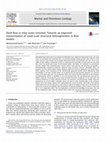
Marine and Petroleum Geology, 2013
Soft-linked relay zones may act as conduits for fluid flow across otherwise sealing fault zones; ... more Soft-linked relay zones may act as conduits for fluid flow across otherwise sealing fault zones; yet, relay zones are commonly also associated with a structurally complex linking damage zone, which in sandstone reservoirs may include low-permeable deformation bands. Incorporating such mm-to cm-scale baffles in flow models is important in order to understand the total effect of relay zones on cross-fault flow. Given the small-scale nature of deformation bands, well below the resolution of conventional reservoir models, their implementation requires implicit representation and upscaling. By applying a deterministically constrained stochastic approach using truncated Gaussian simulation (TGS), we generate reservoir models which closely reproduce observed structural geometries and spatial distribution patterns. Flow simulations of the stochastically generated models, where deformation band permeability is the main variable tested, are compared with the deterministic approach of a previous study of the same relay zone. Our comparison shows that contrasting flow behaviour in the stochastic and deterministic models is amplified as the ratio between host rock and deformation band permeabilities increases. Increasing this ratio causes increased fluid flow complexity in the relay zone and enhances differences in sweep efficiency between the stochastic and deterministic models. Reservoir performance on several model realizations show that time to water breakthroughs in the stochastic models can be 18% shorter whereas their total productions can be 23% lower. The results of the present study indicate that the TGS approach is well suited to capture the details of fluid flow in the presence of small-scale reservoir heterogeneity with intermediate to high permeability contrast relative to host rock (here, 3 to 5 magnitude orders). This has implications not only for the modelling of relay zones, but also for the modelling of other reservoir settings where small-scale (structural) heterogeneity is present.
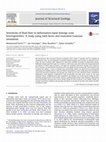
Journal of Structural Geology, 2013
We demonstrate that truncated Gaussian simulation (TGS), which is typically used for modeling of ... more We demonstrate that truncated Gaussian simulation (TGS), which is typically used for modeling of sedimentary rocks, can be employed to reproduce detailed damage zone structure as observed in outcrops. The basic modeled units employed are fault facies classified according to deformation density. Published damage zone field maps are re-drawn as fault facies maps and used for deriving geostatistical descriptions of model input parameters. We apply the modeling method for damage zones related to three scenarios: an isolated fault, branching faults and double-tip interacting faults. Constrained by the resulting TGS models, a series of damage zone permeability models are generated by systematically modulating five modeling factors related to different heterogeneity scales. Single-phase flow simulations reveal that fault facies proportion and damage zone width are the most influential factors, followed by deformation band frequency. Deformation band permeability and fault facies extent are the least important factors. Modifying fault facies proportion and damage zone width mainly change the flow retardation/enhancement in the models, whereas modifying deformation band frequency, deformation band permeability and fault facies extent mainly change the flow tortuosity in the models. Finally, we examine hierarchical modeling and upscaling procedures to incorporate our fine-scale models into flow simulation models.
AAPG Bulletin, 2011
Many people had a hand in forming this dissertation one way or another, either by direct contribu... more Many people had a hand in forming this dissertation one way or another, either by direct contribution, giving input into the research, or keeping me motivated to finish the work. First and foremost, I thank my supervisors, Jan Tveranger and William Helland-Hansen, for their encouragement, guidance, and advice throughout my time as a PhD student. I thank Jan for sharing his insight and ideas on reservoir modelling. Our collaborations during the writing stages of the papers have significantly improved my writing skill. Jan's constant challenges to most research works I brought to his desk have helped elevating the quality of this dissertation and, I believe, making me a better scientist.

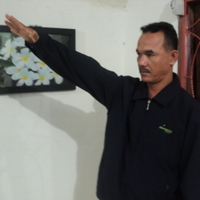








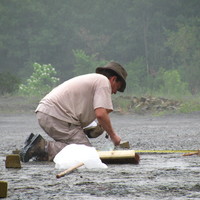
Uploads
Papers by Muhammad Algi Fachri Fachri